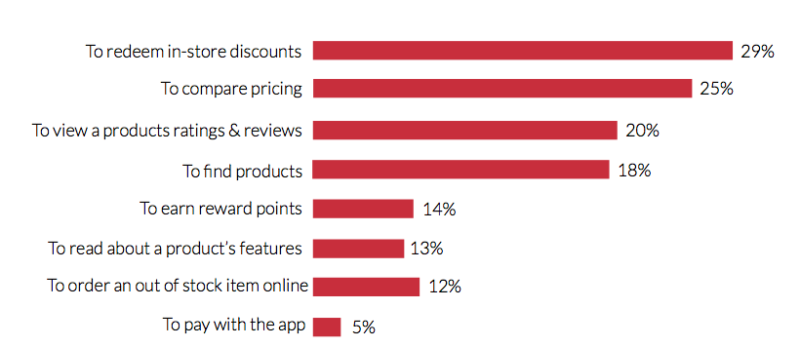Survey: 71 Percent Browse Retail Apps Before Buying In-Stores
Retailers as a group haven’t figured out how apps fit into their larger strategies, despite all the “omnichannel” rhetoric to the contrary. To date, retail apps have mostly been treated as small-screen versions of ecommerce desktop sites with some “circular” content (e.g., offers) thrown in. Yet apps have the potential to become the center of a more powerful […]
Retailers as a group haven’t figured out how apps fit into their larger strategies, despite all the “omnichannel” rhetoric to the contrary. To date, retail apps have mostly been treated as small-screen versions of ecommerce desktop sites with some “circular” content (e.g., offers) thrown in.
Yet apps have the potential to become the center of a more powerful customer loyalty experience and to drive both online and in-store sales. Retailers need to use both the mobile Web and apps, recognizing that apps are going to be used by their most loyal shoppers. And there’s an opportunity to generate more loyalty and engagement with a superior app shopping experience.
All of this is hinted at in a new consumer survey (conducted in July with roughly 350 respondents) from Apptentive. The survey results are consistent with other data in the market and offer insight into how retail shoppers are interacting with mobile apps. At the highest level, US consumers are using retail apps as shopping aids, often supporting and driving in-store purchases.
The survey found that 88 percent of respondents used retailer apps; 61 percent said they used them at least monthly. There was also a sub-segment of respondents who used retailer apps seven or more times per month. This group constituted 26 percent of the app-user population.
Top use cases for retailer apps while shopping in store
The data also show that app users rely on apps to help plan shopping trips before buying in store. Apptentive awkwardly calls this “app-brooming” (aka “Web brooming”). The survey findings reflect that 71 percent of app users have used an app to browse products before buying in store at least once a month. Beyond this, 51 percent have used a retailer app while in store.
Many retailers are judging their apps and app strategies by ecommerce standards, in terms of the number of sales being generated through the app. Yet retailers should look more broadly at how apps boost loyalty and how they’re used as a tool that often results in an in-store transaction.
Apptentive makes the case for a wider range of KPIs or benchmarks when evaluating app performance: “positive ratings and reviews, healthy retention rate, and increasing number of monthly active users (MAU).”
An earlier survey from Forrester, released in February, found that retailers were deemphasizing apps because of the high cost of development and the challenges of gaining app adoption and retention. Roughly 56 percent of respondent retailers reported that apps are “not a key component of their mobile strategy to consumers.”
While it is challenging to build a good app, generate downloads and retain users, there’s also an opportunity cost (perhaps hidden to most retailers) in giving up.
Contributing authors are invited to create content for MarTech and are chosen for their expertise and contribution to the martech community. Our contributors work under the oversight of the editorial staff and contributions are checked for quality and relevance to our readers. The opinions they express are their own.
Related stories
New on MarTech

